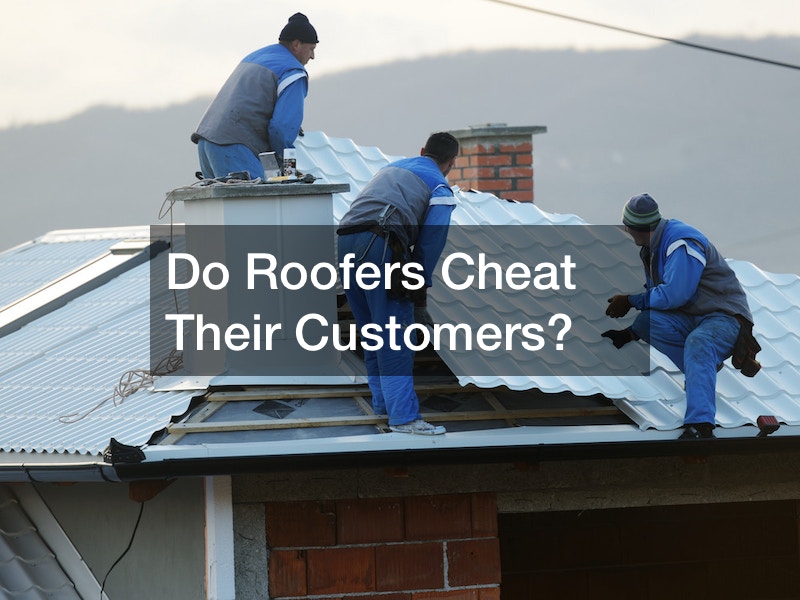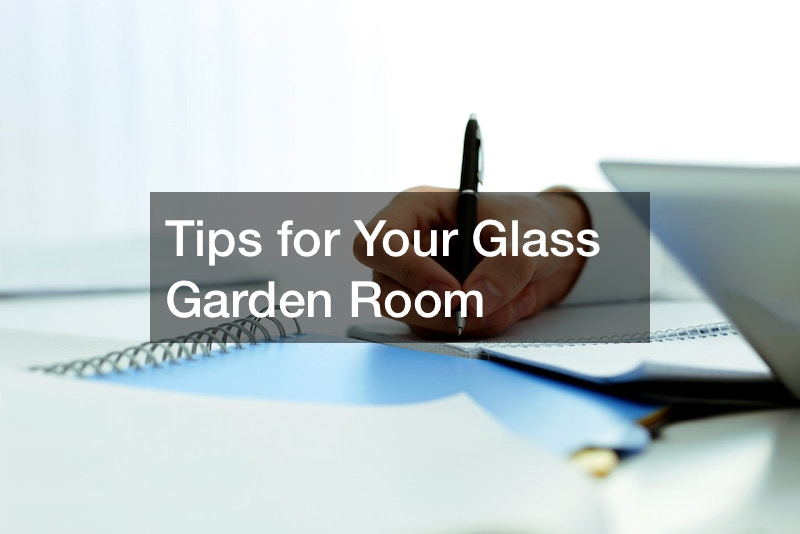
When it comes to building your dream home, office, or any other building, the choice of your roof really matters. You might be wondering what type of roof is the best. Generally, there are only two types – flat roofs and metal roofs.
So how do you know which option to go for? Which one is best suited for your project? It is vital that you make the right decision because a roof repair or replacement can be very costly. In severe cases, a roof replacement may interfere with the structural integrity of the building, causing unnecessary damage that could have been avoided in the first place.
Before you contact your local roofing company for roofing services, you need to familiarize yourself with the available roofing solutions. You may be having trouble deciding between a flat and a metal roof, but worry not. You’ll get more insights into both types, the pros and cons, as well as the recommended buildings and climates for each.
Metal Roofs
Metal roofs are gaining popularity in major construction projects because of their many advantages. Some of the reasons why they are highly sought after include:
Durability
Someone will tell you that the durability of a roof is a unique selling point on its own. When investing in a roofing material, you want something that can serve you for years to come. Metal roofs have a life span of up to 70 years. In addition, they require little to no maintenance. Once installed, you do not have to worry about replacing shingles since they are installed in sheets. You only have to do a re-coat every few years if you live in a very humid area where UV rays may affect the metal coating, causing it to rust.
Aesthetically Pleasing
Unlike the old days, metal roofing was frowned upon because it easily stained and would rust. Often, this would make the home look dilapidated and unkempt, which was not a good appearance. Fast forward to today, the construction and building industry has made significant advancements, and metal roofs are now available in a wide range of colors, designs, and shapes. Apart from the addition of new colors, the coating has also been improved with protective metal coatings that keep it from staining or rusting.
Energy Efficient
Every homeowner will tell you that electricity bills can be a nuisance. They are therefore continuously looking for ways to cut down on energy costs. Investing in a metal roof could be the answer to your problems. On average, a metal roof installation saves up to 25% of your energy bills. In very hot areas, metal roofs reflect sunrays and direct them away from your home. It, therefore, saves you cooling costs if you have an AC, so that you do not have to run it constantly especially during the summertime.

Environment Friendly
Homeowners today are conscious of the environment. In some countries, some governments are also formulating building and construction laws to minimize carbon emissions and are recommending more environmentally friendly materials. Generally, a metal roof is composed of up to 95% recycled content. Even though they are highly durable, when it comes to disposing of old metal, it is readily accepted in major recycling outlets.
Easy To Install
It is easy to install metal roofs and what’s even better is that they can be installed over an existing roof. Removing a roof can be an extremely messy and time-consuming job. Metal roofing materials are made of light materials that make it unnecessary to tear them off. You end up saving costs when re-roofing.
However, before installation, consult your local metal roofing company for building codes when roofing over old roofs, as some states require you to completely tear off the old one before a new roof installation.

Cost
If we are being honest, everyone looks for an opportunity to save that extra coin. That is why metal roofs are popular because of their long-term benefits. Whereas the cost of materials and installation might be expensive, the overall lifespan and saving on maintenance costs make up for the initial costs.
Essentially, you are looking at a long-term investment that saves you routine maintenance checks. According to researchers, you are less likely to outlive your metal roof, making it an excellent roofing choice.
Perfect For Winter
During winter, homeowners are constantly worried about snow build-up. This extra weight on your roof can damage the structure of your home. Luckily, you can expect the snow to slide off metal roofs because they are fairly slippery.

Downsides Of Metal Roofs
Although the advantages of a metal roof are plenty, they also have some downsides.
Affordability – Although we have already talked about the durability of metal roofs offsetting the initial cost of installation, not everyone can afford them. If you are not planning on staying in the house long enough to enjoy the benefits of a metal roof, it does not make economic sense to install one.
Noisy – In times of heavy rainfall or a hailstorm, metal roofs are extremely noisy and may be a bother. Heavy hailstorms can also dent the metal roof. To counter the noise, you can do attic insulation for noise cancellation, but it comes at an additional cost.
Requires professional installation – installation is best left to select specialists as different retailers have their own techniques. If you ever have a roof repair, you will be required to contact professional roofers, which comes at a cost. DIYers are therefore limited in making repairs lest they damage the roof.
Inconsistency of color match – if you ever want to expand your home or repair a section of your roof, it would not be easy to find the exact match of your existing metal.
Performance – although metal roofs perform exceptionally well in different weather conditions, a poorly done installation could affect its overall performance. Water accumulation can cause severe damage. In addition, low-grade metals tend to rust easily, so be on the lookout for fake or low-quality metal roofs.
Flat Roofs
Flat roofs come in different types. Some of the most popular ones include:
1. Built-up Roof (BUR)
This type of flat roof is made from gravel and hot tar. It features several layers of waterproof sheets. It is one of the most popular flat roof choices and has been around for over a century. It is low in maintenance and fairly affordable, making it a top roofing solution.
Another reason it is highly sought after is its ability to combat UV rays. If properly maintained, it can last up to 40 years. The only downside is that it is heavy due to the multiple layers and its installation involves hazardous fumes. Some variations are also susceptible to wind damage on roof.
2. PVC Membrane
This type of flat roof comes in a single-ply layer. It is one of the sturdiest and can last up to 20 years. Its major selling point is its durability and tolerance for high temperatures. The PVC membranes are lightweight and recyclable, making them a popular choice for homeowners looking for environment-friendly roofing solutions.
It is also easy to install and highly flexible, and can be customized to meet one’s needs. However, the installation must be done by a specialized professional from one of the certified flat roof companies.
3. Modified Bitumen
This type of flat roof shares similarities to the BUR flat roof in both texture and appearance. It consists of five layers, making it a labor-intensive installation and requires a professional at all times. The installation should not be done in an occupied building as it can be hazardous, hence the need for taking safety precautions.
Although the installation process is long and intensive, it is worth it. Modified bitumen roofs have a long life span of up to 20 years and are usually easy to repair.
4. Spray-on Flat Roof
Installation of this type of roof begins with a base layer of foam and is finished off with a waterproof coat. The final finish will be white or gray. It is one of the easiest and fastest flat roof installations. However, it is quite costly since it takes the shape of any roof and offers a waterproof finish. Its lifespan is up to 40 years.
5. Green Flat Roof
Homeowners are constantly looking for eco-friendly alternatives for their construction projects. The best roofers are those considered mindful of the environment. The green flat roof perfectly fits in this category because it is made from living plants. It also offers an aesthetically pleasing appearance while keeping energy costs low.
One downside of this type of flat roof is the regular maintenance. Since your rooftop will accommodate living plants, you need to check for weeds and remove them regularly.
Advantages Of A Flat Roof
Affordability – although the cost of installing a flat roof varies depending on the type you choose, the average cost is significantly more affordable than a metal roof. Generally, materials and the cost of labor are cheap. In addition, roofing contractors do not undergo a laborious task compared to a metal roof installation.
More usable space – a flat roof creates more room. The options are endless on what to do with the extra space. You can choose to turn it into a lounge or an outdoor space for hosting parties and events. You can even customize it to become a garden.
Easy to install – the installation time is short and quick compared to a metal roof installation. Usually, it takes only two days to install a flat roof, but this varies depending on the roofing material and size of the roof.
Low maintenance– flat roofs rarely require repair or replacement. When they do, the job is usually straightforward and can be taken care of instantly.
Aesthetically pleasing design – buildings with flat roofs generally stand out because of their clutter-free and sleek design. In addition, they can also be customized to meet the owner’s needs.
Downsides of a Flat Roof
Poor insulation – when compared to its metal roof counterparts, it does not offer as much protection from extreme temperatures. Despite the multiple layers added, there is little to no room to add material to shield your building from harsh elements.
Poor drainage system – although it is called a flat roof, it is not entirely flat. Flat roofs are actually slightly slanted. This is usually done to account for water drainage. However, not all flat roofs have a slight pitch. Overall, the presence or lack of the slant is not enough to prevent pooling during heavy rainfall. Over time, this can cause a deterioration in the roof and damage the structure of the building. That is why regular inspections are recommended to clear your drainage system to avoid excess pooling.
Debris build-up – since a flat roof does not offer a sliding off option, debris may pile up. In addition, falling leaves, dust and other materials can collect on your roof. Again, you need to regularly clean up to avoid clogging your drains.

Prone to cracks and warps – your flat roof is made up of concrete and other construction materials. Over time, it may crack due to extreme weather conditions. Therefore, it is advisable to regularly inspect your flat roof and spot and address any problems in their initial stage.
Ultimately, when it comes to a flat or metal roof, it all lies in personal preference. Each type has its own advantages and disadvantages, so you need to establish your needs, work within your budget and choose a roofing solution that is best suited for you. Remember, there is no right or wrong roof. It simply depends on the type of construction you are working with and the availability of funds.




